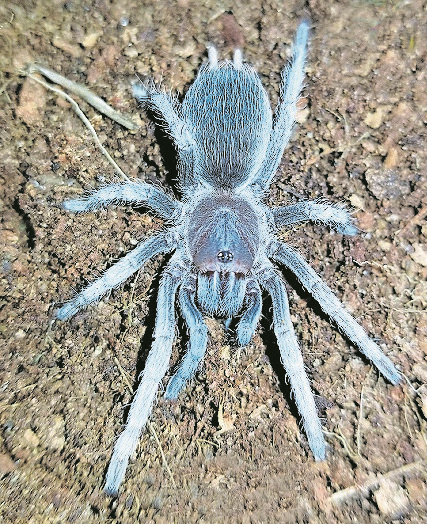

Husbandry Video Theraphosa stirmi Husbandry Article Husbandry Video Rehousing Video Thrixopelma ockerti. (and fungus are more related to us then plants.)Īnd that's why we have multiresistant strains of bacteria and why they're so much more prevalent in hospitals. ( Valerio, 1980) Stichoplastoris asterix là mt loài nhn trong h Theraphosidae. Rehouse and Notes Video Theraphosinae sp.

Speaking of mushrooms, we are more closely related to fungus then to plants. Stichoplastoris asterix (Add) Stichoplastoris denticulatus (Add) Stichoplastoris elusinus (Add) Stichoplastoris longistylus (Add) Stichoplastoris obelix. So what is the lesson to be learned here? The mascot of genderless/agender people should be mushrooms. That goes for (most) animals, plants and some fungus (but not most). Stichoplastoris obelix, Sphaerobothria hoffmanni, Pterinochilus chordatus. Well, it's super simple, males have the smaller gametes (sex cells) and females the bigger ones. Vogelspinnen 'Stichoplastoris asterix' und 'Stichoplastoris obelix' Anfang Oktober kam mir ein Artikel des Schweizer 'Tagblatt' vor die Augen, der die Namensgebung neu entdeckter Tiere thematisiert und dabei tief in die Unterhaltungskiste greift, indem er mit verschiedenen Beispielen unterstreicht, dass Wissenschaftler auch eine ordentliche Portion Phantasie beweisen. Stichoplastoris asterix, Cratorrhagus tCyclosternum bicoloretramerus. So anyways, Fred, the bacteria, so why can't he be (biologically) male? What makes a male a male and female a female (biologically speaking)?

So this should be awesome for Fred right? he can repopulate the town with all his clones (technically bacteria have no genders, but Fred identifies as male in this scenario, so yeah.), but you know Fred also has the power to just transfer his genes to someone else by connecting himself to this other bacteria and just sending over his genes (conjugation), now his clones don't have to be lonely and can hang out with the clones of this other bacteria. So lets say a new anti-biotic came out, great at killing all kinds bacteria, so everyone in bacteria town is dying out, but not Fred, the Bacteria who is immune to this evil substance. Rehouse and Notes Video Theraphosinae sp. Well one of the ways is of course mutation, but there is also conjugation. Animalia: information (1) Animalia: pictures (20673) Animalia: specimens (7109) Animalia: sounds (722) Animalia: maps (42) Eumetazoa metazoans. So, what about one celled organisms like bacteria? how do they mix around their genetic information in a population if they are incapable of sexual reproduction. Stichoplastoris is a genus of Central American tarantulas that was first described by J.-P. In no particular order, a few might have slipped my mind.While we're on subject of asexual reproduction, as you should know the negative part of asexual reproduction is that genes just don't really get mixed around a lot, which can lead to a very not genetically diverse population which becomes very susceptible to dying out for a number of reasons. As of 2017 update, it contains 8 species from El Salvador, Costa Rica, and Panama. It was first described in 1997 by Rudloff. Judging by some of the comments I read recently, and some of the telephonic conversations I had with folks, these are the ones I suggest a "Noob" MUST avoid at all cost. Stichoplastoris is a genus of spiders in the Theraphosidae family.


 0 kommentar(er)
0 kommentar(er)
